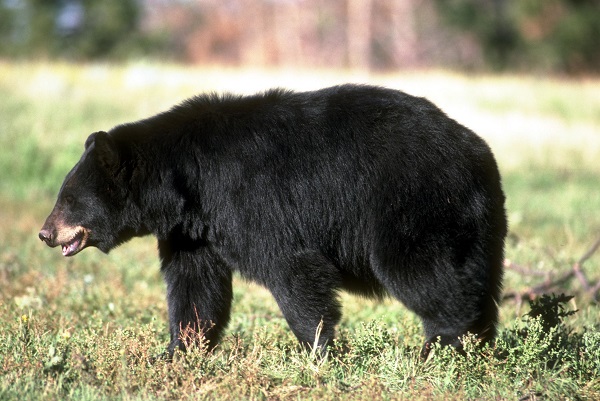| The Sandisfield Times |
|---|
| Bears in Our Back Yards Co-Existing With Beasts |
|
by Tom Christopher Published August 1, 2024. |
 (Photo: Wikipedia) |
|
Like most small children of my era, a bear slept in my bed every night – a teddy bear. Today, I have a real one, a large black bear, that strolls through my Sandisfield yard on a regular basis. I find those encounters with such a magnificent wild creature thrilling. But the real thing is not so easy to co-exist with as that long ago toy. We 21st century people have a complicated relationship with Nature, and with bears in particular. It was simpler, if more brutal, in the past. Land clearance and unregulated hunting had nearly eliminated black bears from Massachusetts by the mid 1800s, with only a small remnant population surviving in the northern Berkshires. But by the 1950’s, the public attitude toward bears had changed. Maybe it was all of those friendly lectures from Smokey or the Yogi Bear cartoons we watched on Saturday mornings, but the general population of Bay Staters no longer viewed bears as a mortal threat. In 1952, a law was passed that bears, who previously had been allowed to be shot on sight, became a regulated game animal that could only be hunted during a specified season and only by properly licensed hunters. The black bear population in Massachusetts began to rebound, although initially the increase was very slow. As late as the 1970s, the total number of bears resident in the state was something like 100. Today, state wildlife biologists estimate the bear population at over 4,500 and growing rapidly. What happened? Certainly, the reforestation of much of the land once cleared for agriculture in Massachusetts set the stage for this population explosion, as did the protection from unrestricted hunting. But according to David Wattles, the Black Bear and Furbearer Biologist for the Massachusetts Division of Fisheries & Wildlife, this current bear boom is also due in part to the bears’ adaptation to a rich new food source – all the calories we provide in our garbage, bird feeders, compost heaps, and gardens. Bears do not eat at all after entering their dens to hibernate in mid-November until they re-emerge sometime between February and mid-April (depending on the weather). As a result, according to Wattles, they spend much of the rest of the year packing the fat back on. This can be a laborious process if they are pulling apart rotten logs to harvest grubs. In a matter of minutes, though, they can consume thousands of calories with a visit to your bird feeder. And once a bear has found a nutritional goldmine such as that, they will return on a regular basis, looking for more. I discovered the truth of this last summer when a dwarf cherry tree I had planted years ago at one end of my vegetable garden finally bore a heavy crop of fruit. I left my Sandisfield home for a few days, planning to pick the cherries when I got back. When I returned, though, they were all gone. It was my wife Suzanne, the environmental scientist, who spotted the pile of bear scat filled with pits near the tree. True to David Wattles’ warning, the bear has been coming back every few weeks since its feast, tearing down my garden fence to climb in for an inspection. So far it hasn’t begun to eat my lettuces, carrots, or tomatoes, but it surely will unless I finish installing my new electric fence. Fortunately, I don’t keep bee hives or chickens, both of which are also magnets for hungry bears. To protect these, an electric fence is also essential. Not just any electric fence will do, either – David Wattles recommends looking at the plan and specifications you will find online at the state's Black Bears in Massachusetts website. It includes a down-loadable PDF titled “Electric Fence Guide to Prevent Bear Damage.” Wattles also shared a tip for enhancing the fence’s effectiveness: wrap aluminum foil strips daubed with peanut butter or bacon grease around the electrified wires (while the electric current is shut off) to teach any exploring bear just how bad your garden or chicken coop tastes. Other obvious precautions for avoiding bear visits are to eliminate obvious attractants such as bird feeders, unsecured outdoor garbage containers, and outdoor pet feeding. Suzanne and I are enthusiastic composters, but we don’t add fruit peelings or other bear-attracting wastes to our heap. We want to co-exist peacefully with our wild ursine neighbors, and that means keeping them at a distance. |

|
©The Sandisfield Times. All rights reserved.
Published August 1, 2024